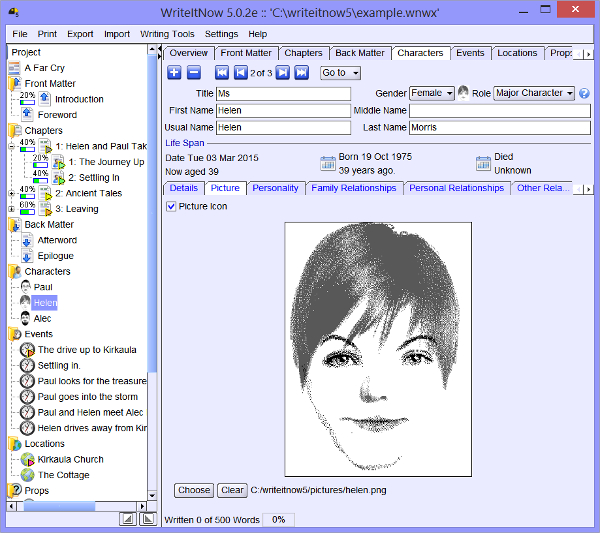
Generally, the cost is not too high, considering what these programs offer and the time they can save you, but still, with many writers struggling to make a living from their work, even a small cost can be a factor.
WRITEITNOW 6 REVIEW SOFTWARE
There are a few free book writing software choices out there, but most of them do involve some cost, either up front or as a subscription. The very complexity that makes these apps so powerful also means that you’ll need to set aside some time to learn them-and that’s time away from the most important thing: your writing. As you can see from the Scrivener screenshot above, there are a lot of features to get your head around. Whereas most writers are familiar with programs like Microsoft Word by now, the more advanced book writing apps do have more of a learning curve. If you tend to work on fairly short, relatively simple projects, then you may not need it. Of course, specialist book writing software is not for everyone. It can save you so much time, letting you not just write your book but also organise and edit it, all on your computer screen.

If you’re struggling with a manuscript that threatens to get out of hand, if you’re constantly having to print it out and use cumbersome visual aids like labelling sections with different-coloured post-it notes and arranging index cards on a desk, then you may want to consider trying book writing software. Using book writing software is a bit like using a dishwasher-before you had one, you never thought you needed it, but once you discover how easy it is, it’s really hard to go back to doing the dishes by hand!

The editing screen in Scrivener, a popular book writing software suite that offers organisational tools galore Editing assistance, helping you organise your book with labels, writing status, word-count targets, etc.Ways to help you focus on your writing, by switching to a special writing mode with no visual distractions on the screen.Formatting assistance, so that you can output your work in a suitable format for an ebook, for a printed book, or as a manuscript for submission to an agent or publisher.The ability to make notes and link to research, while keeping the manuscript clean.

Tools to help you structure your book, letting you get a visual overview of chapters and sections and move them around easily.Each one works differently, but in general, they’ll offer things like: The best book writing software programs offer special features to help you with all of these problems. You have characters and settings to keep consistent, themes to be developed, or in a non-fiction book, you have research and footnotes, sections and sub-sections, and a lot of other things that are tough to keep track of in a simple Word file. You have sections, chapters, and plot lines to keep track of.

The average length of a novel is around 100,000 words, and non-fiction books can sometimes run a lot longer. The problem is, though, that Word was built for writing short articles and reports, not for writing a book. Traditionalists might prefer a simple pen and legal pad, while a simple word processing program like Microsoft Word will always do the trick. We’ll cover the pros and cons, and then we’ll look at the best apps for writing a book. In this post, we’ll look at when (and when not) to use book writing software programs. You don’t need special book writing software to write your book, but it can certainly help.


 0 kommentar(er)
0 kommentar(er)
